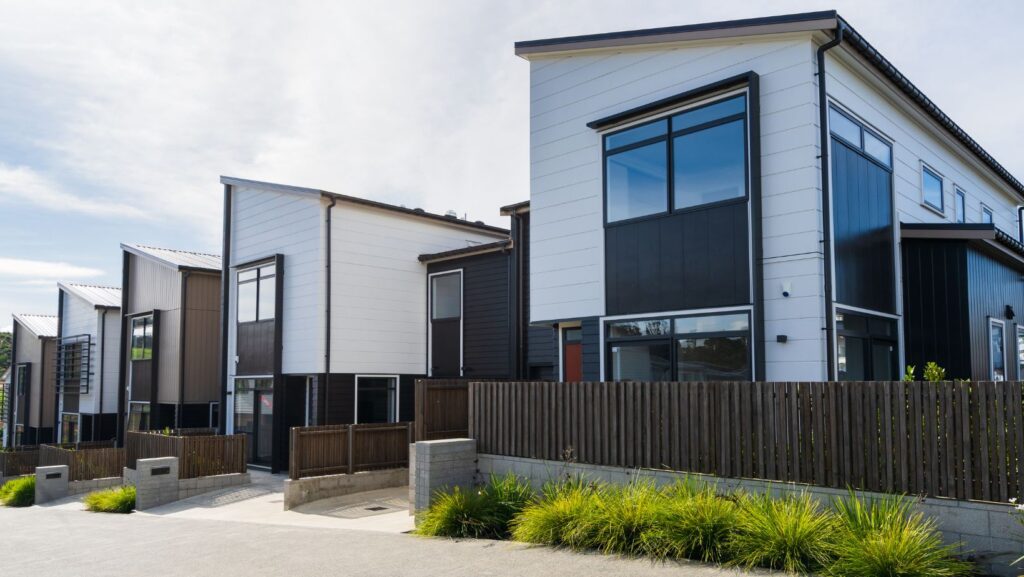Real estate markets in Indonesia and Malaysia are booming, offering exciting opportunities for investors and homeowners alike. From bustling urban centers to serene beachfront properties, these Southeast Asian countries boast diverse landscapes and thriving economies. Let’s delve into the vibrant world of real estate in Indonesia and Malaysia, uncovering key insights and trends that make them prime destinations for property investment
Overview of Indonesia’s Real Estate Market
Indonesia’s real estate market is undergoing rapid expansion and transformation, making it a focal point for both domestic and international investors. Driven by a growing economy and an increasing urban population, the demand for both residential and commercial properties has surged across the archipelago. Property in Indonesia is notably diverse, offering a range of options from high-rise apartments in bustling Jakarta to serene beachfront properties in Bali and Lombok. However, the market also poses challenges, such as complex regulatory environments and restrictions on foreign ownership, which can vary significantly between regions. Nevertheless, with robust economic forecasts and a strategic position in Southeast Asia, Indonesia’s property market continues to lure those looking for substantial growth and investment opportunities. As infrastructure development progresses, accessibility and property values in previously underdeveloped areas are expected to rise, potentially yielding high returns for early investors.
Key Investment Hotspots in Indonesia
In Indonesia, certain regions stand out as key investment hotspots for real estate, attracting attention for their growth potential and strategic importance. Jakarta, the capital, remains the primary hub for commercial real estate due to its role as the economic and political heart of the country. The city is seeing an influx of investments in high-rise office buildings and luxury apartments, catering to a growing middle-class and expatriate community. Bali is another prime location renowned for its tourism appeal, which drives demand for both residential and commercial properties, including hotels and villas. Surabaya and Bandung are emerging as significant markets due to their industrial growth and expanding urban populations, making them attractive for both residential and commercial developments. Additionally, Batam, located close to Singapore, is becoming a hotspot for industrial real estate due to its free trade zone status, offering tax incentives and attracting foreign manufacturing firms.
Overview of Malaysia’s Real Estate Market
Malaysia’s real estate market presents a landscape of stability and progressive growth, appealing to both local and foreign investors. The market is characterized by a well-balanced mix of residential, commercial, and industrial properties, with a particular strength in affordable housing, which the government has emphasized through various initiatives. Key urban centers like Kuala Lumpur and Penang continue to be the epicenters of high-value investments, showcasing a burgeoning demand for luxury condominiums and office spaces.
The Malaysia My Second Home (MM2H) program further enhances the country’s attractiveness by offering long-term residence visas to foreign property investors, which has significantly boosted the luxury property sector. Moreover, Malaysia’s strategic location in Southeast Asia provides an advantageous gateway for international businesses looking to establish a base in the region. As the country continues to invest in infrastructure improvements, areas previously considered peripheral are quickly becoming lucrative for property developers and investors, promising continued growth in the Malaysian real estate landscape.
Key Investment Hotspots in Malaysia
In Malaysia, several regions have distinguished themselves as key investment hotspots in the real estate market, attracting a wide array of investors. Kuala Lumpur, the nation’s capital, remains a top choice due to its vibrant economic activity and extensive development projects, which include high-rise residential units, luxury hotels, and commercial spaces. Penang is another major hotspot known for its blend of cultural heritage and modern luxury living, making it popular for residential and hospitality investments. The Iskandar region in Johor, close to Singapore, is another burgeoning area that benefits from cross-border trade and investment, driven by industrial and residential development. Additionally, Sabah and Sarawak are gaining attention for their tourism potential and untapped natural resources, opening opportunities for resort and commercial real estate developments. These areas, supported by government incentives and infrastructure improvements, are expected to continue drawing substantial investment into Malaysia’s real estate sector.
Comparing Real Estate in Indonesia vs. Malaysia
When comparing the real estate markets of Indonesia and Malaysia, several distinct differences emerge, reflecting each country’s unique economic and regulatory landscape. In Indonesia, the real estate market is characterized by high growth potential, particularly in urban and tourist-heavy areas like Jakarta and Bali. However, the market is somewhat restricted by stringent property ownership laws that limit foreign ownership primarily to leasehold arrangements. On the other hand, property in Malaysia for sale offers more favorable conditions for foreign investors, including the ability to obtain freehold titles and additional incentives through programs like Malaysia My Second Home (MM2H), making it easier for foreigners to invest.
While Indonesia offers higher potential returns due to rapid urbanization and a booming tourism sector, the risks associated with political and economic instability can be higher compared to Malaysia. Malaysia’s real estate market is noted for its stability, bolstered by a more straightforward legal framework for property transactions and a government that actively encourages foreign investment in real estate. This makes Malaysia an attractive market for investors looking for a more secure environment. Overall, while both markets present valuable opportunities, the choice between investing in properties in Malaysia or Indonesia often depends on the investor’s risk tolerance and investment strategy.
The Impact of Tourism on Real Estate
The impact of tourism on real estate is profound and multifaceted, particularly in regions that are heavily dependent on this industry. In tourist hotspots, increased visitor numbers typically drive demand for a wide range of property types, from hotels and resorts to vacation homes and rental apartments. This demand boosts property values and can lead to rapid real estate development, often transforming local markets. For instance, areas renowned for their natural beauty or cultural significance may see a surge in the construction of luxury accommodations and commercial spaces to cater to affluent tourists.
Moreover, the influx of tourists contributes to the local economy by increasing spending on accommodation, dining, and entertainment, which in turn creates a positive cycle that further enhances the attractiveness of the area for property investment. However, this relationship can also pose challenges, such as the risk of overdevelopment, which can lead to environmental degradation and potential long-term economic instability if tourism numbers fall. Thus, while tourism can significantly boost real estate markets, it requires careful planning and management to ensure sustainable growth and preserve the intrinsic value of the destination.
How to Choose the Right Property
Choosing the right property requires a strategic approach, whether you’re an investor or a prospective homeowner. First and foremost, location is paramount; it determines not only the lifestyle amenities available but also the potential for property value appreciation. Consider factors like proximity to schools, workplaces, public transport, and recreational facilities, which can greatly influence your quality of life and the property’s rental or resale value. Secondly, assess the property’s condition and potential need for repairs, as unforeseen renovation costs can significantly impact your financial calculations. Additionally, it’s crucial to understand the local real estate market trends, including the historical price movements and future development plans in the area, to gauge the potential return on investment. Lastly, legal due diligence is essential to ensure that the property has a clear title, complies with zoning laws, and meets all regulatory requirements, preventing any legal complications down the line.




More Stories
How to Bet from Your Phone, Even If You Have Weak Internet
Cyprus Residency vs. Citizenship: What’s the Difference?
5 Tips for Choosing a Barndominium Floor Plan for Your Dream Home